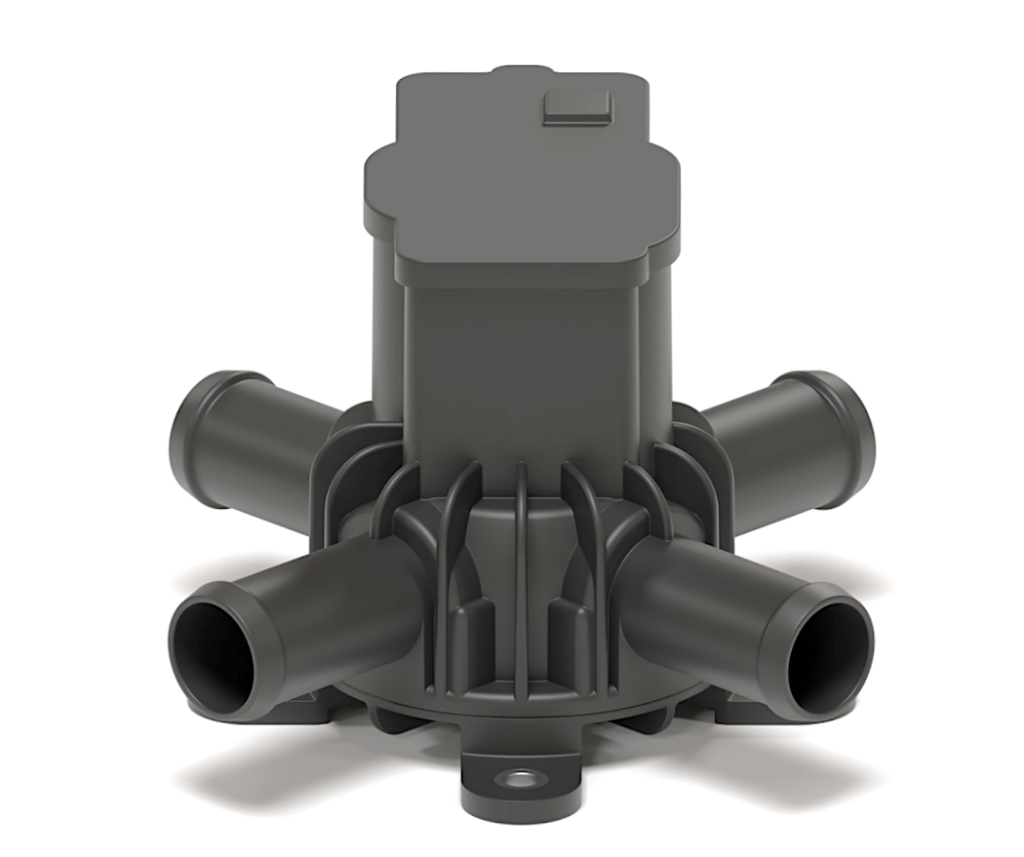Battery Show North America 2023 Report: New Solutions for EV Batteries
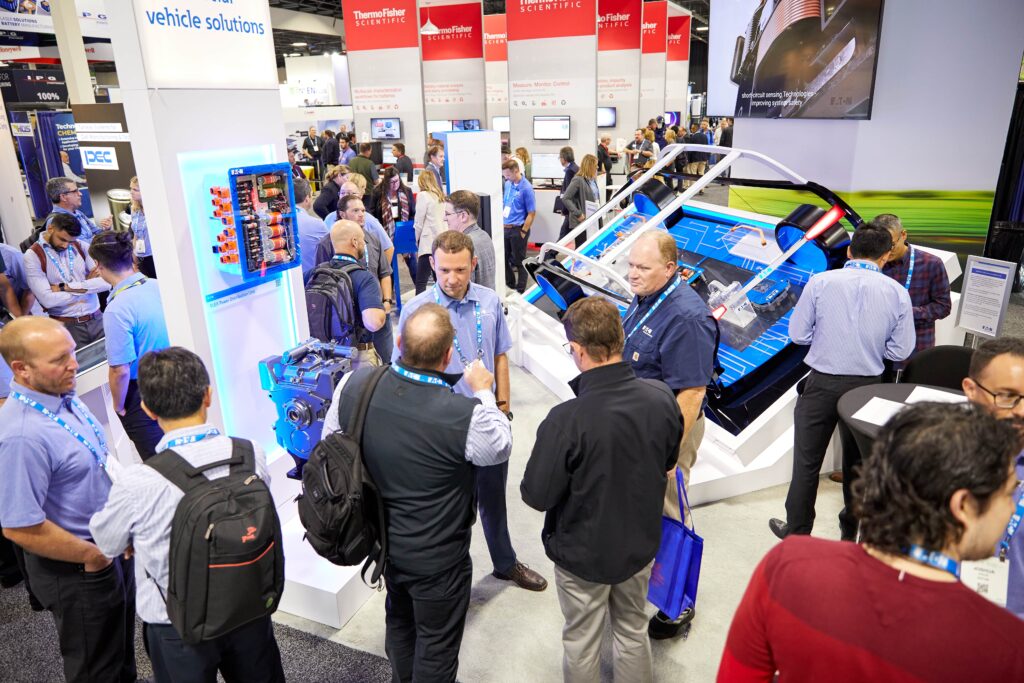
(Courtesy of Informa Markets)
Heat seekers
Peter Donaldson gives his round-up of the products on display at the The Battery Show North America, where the focus was on tackling thermal issues
This year’s Battery Show North America and Electric & Hybrid Vehicle Technology Expo, held in Novi in Michigan, had if anything an even greater emphasis on battery safety than usual, with many innovations aimed at stopping a thermal runaway in its tracks, as well as on thermal management.
Packaging and Crating Technologies (PACT) showcased its proprietary ThermoShield that absorbs heat and prevents thermal runaway from spreading beyond the original failing cell and its immediate surroundings, according to Rodger Mort. The company has developed and tested the material, which it now offers alongside a similar material used to wrap complete battery packs for transport.
He explained that four layers of special ink are applied to a single layer of paper. This material is used to wrap each individual cell in a module or pack. When the material reaches 200 ºC, he said, it undergoes a chemical reaction that absorbs much of the heat and releases moisture with a temperature of 60 ºC.
“So the paper basically creates a non-toxic moisture vapour cloud, and when the cell starts its thermal runaway and vents gas, the moisture turns it to char and doesn’t allow oxygen or other gases back in,” Mort explained. “The chemistry in the cell creates enough oxygen to keep it burning, but it can’t explode. By keeping the internal temperature below 780 ºC you don’t hit the 820 ºC point where lethal and explosive chlorine carbides and acids form.”
Mort said the company has put ThermoShield through a range of tests at an internationally recognised facility run by Transport Canada and passed all of them. “We put a hundred 18560 cells charged to 35% in a box and set one off. Nothing propagated and it shut off,” he said.
“We then tested 91 cells charged at 35%, put a heat stick in one of them, but then put nine cells charged at 100% in the centre of the pack and lit the first cell. That was a non-issue after 20 minutes, so we let the second one go off at 100%, and even that didn’t propagate through the box. Then we started working our way up to batteries of 1200 Wh with big pouch cells and prismatics, and the paper passed every test.”
EFI Polymers showed a low-density potting material for encapsulating cells in batteries, which is designed to slow and stop thermal runaway, according to Brian Hanson.
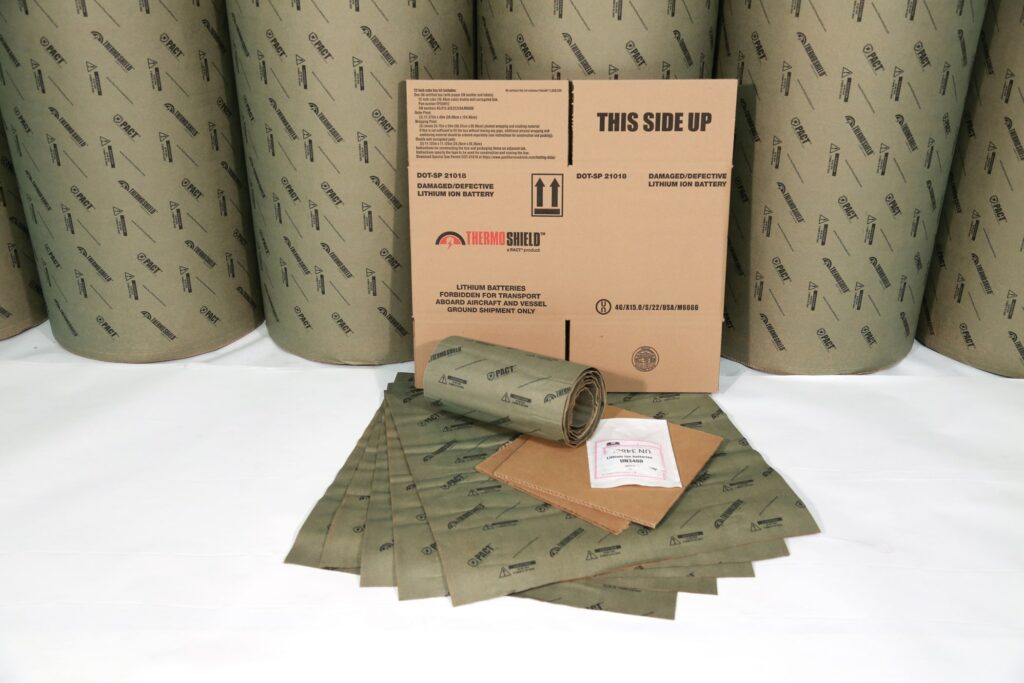
(Image authors own from The Battery Show North America)
Known informally as Low Density (LD) Material, EFI’s material contains glass microspheres, and lasts four or five times longer than a conventional foam in stopping thermal propagation. It is also much lighter than conventional high-density potting materials, which are typically about 40% heavier. Typically used around cylindrical cells inside a module, the potting can be dispensed using most conventional, off-the-shelf meter mix equipment.
“We had customers who were using expanding foams that claimed to extinguish fires, but we don’t really believe there’s a polymeric that can stop a fire once it starts,” Hanson said. “So this is more to slow the spread of a thermal runaway down and make sure a fire never breaks out at all. Some OEM automotive companies were asking for something exactly like this, so we formulated it.”
The material is a two-part polyurethane. The glass microspheres, which look like a powder to the naked eye, are suspended in one of the two parts.
EFI has tested the material with customers, but the test data is proprietary. “There’s not a real good third-party test for it today, so it’s very much a one-on-one relationship with customers.”
Testing involves initiating a thermal runaway in a representative battery pack and then measuring how long it takes to propagate throughout the pack. “In most packs in which we’ve tested our potting, it’s been somewhere around 20 minutes, where the standard before was nearer 5 minutes.”
The LD material also provides structural strength and helps damp down vibrations.
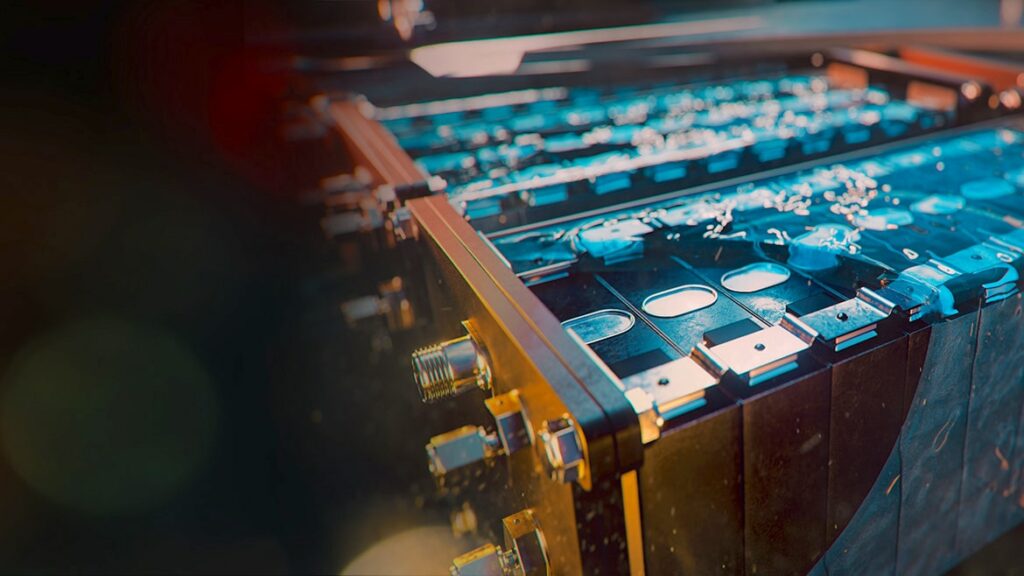
(Image courtesy of Lubrizol)
Lubrizol promoted its new range of Evogen single-phase dielectric thermal management fluids for immersion cooling of EV batteries and other applications in the powertrain, such as inverters and motors, and discussed their fundamentals with us.
With the move to higher power and energy densities, immersing all the battery’s cells in a dielectric fluid circulated by a pump is attracting more interest from vehicle and battery OEMs, particularly for high-performance applications with demanding C-rates for both charging and discharging,
Shawn Jarecki said, “Higher C-rates and safety is a really big issue, particularly around thermal runaway. In abuse testing, we’ve shown that our fluids can prevent propagation of thermal runaway from one cell to others in the pack.”
Thomas Corrigan explained that these fluids have to be carefully formulated for each application to optimise key parameters such as thermal conductivity, heat capacity, viscosity, dielectric strength, flashpoint and auto-ignition temperature. Emphasising that formulating these fluids is a delicate balancing act, he pointed to Lubrizol’s anti-static chemistry.
“If you’re too dielectric, you can actually get static build-up and have arcing issues, which can lead to shock and fire,” he said. “We’ve found the sweet spot of electrical conductivity where we’re still insulating but have enough static dissipation to mitigate that build-up.”
That a fluid in direct contact with high-energy cells has a flashpoint (the minimum temperature at which there is enough vapour for a spark to ignite it) and an auto-ignition temperature is an uncomfortable fact, but it is to be expected because these fluids are hydrocarbon-based.
Corrigan said that even in tests that have pushed cells into thermal runaway, the fluid, in conjunction with a well-engineered system, has proved resilient, even though cell temperatures reach well above the 300 ºC or so, which coincides with these fluids’ auto-ignition temperatures. Part of the reason for this, he said, is that the fluid circulates in a sealed, oxygen-free environment, and module/pack venting systems ensure that gases generated in a thermal runaway do not pass through the coolant.
Naturally, developing thermal management fluids for diverse and demanding applications requires a lot of testing. Corrigan said, “I put together our formulated packages in-house, and we have extensive analytical testing capabilities. Things like flash point tests are routine, as are viscosity, density, heat capacity and thermal conductivity, for example.
“For testing with live battery cells up to module and pack level, Lubrizol partners with Exoes. “We’ve designed an immersion module with them and have actually tested both prismatic and pouch cells using it, and we’re working on a cylindrical cell test programme now,” said Corrigan.
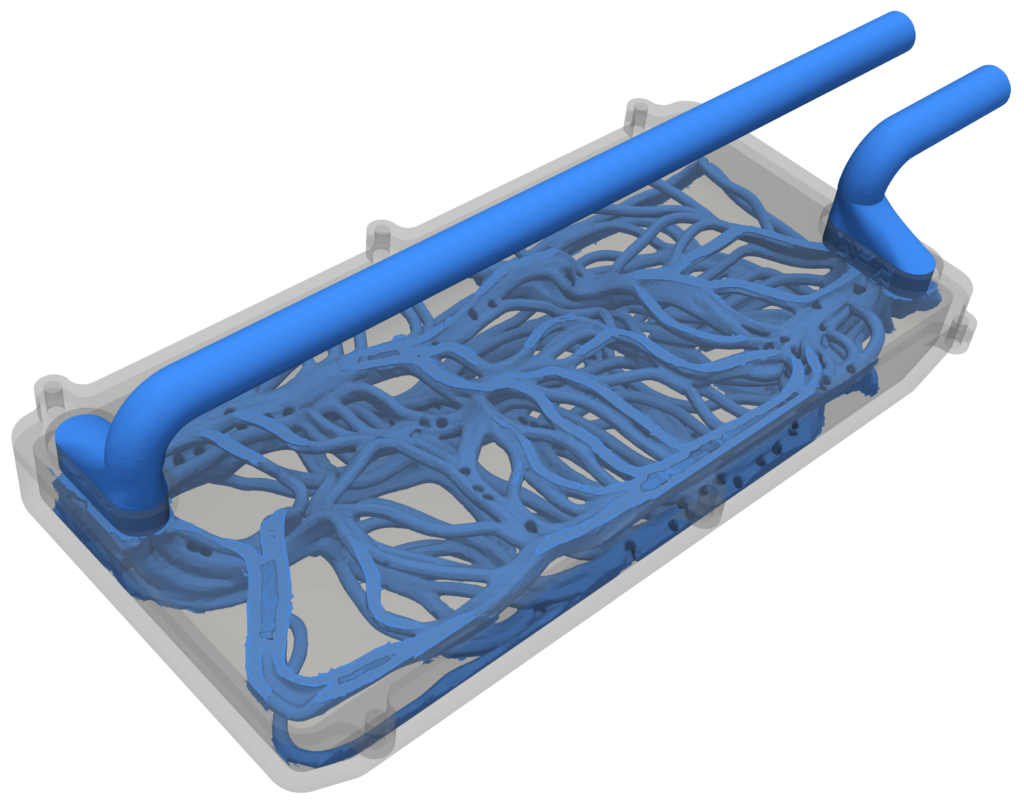
Diabatix showcased its ColdStream thermal analysis and design software that can create efficient cooling systems that more closely resemble a circulation system that you might find in a plant or an animal than in anything human-made, one example being a very organic-looking cold plate.
“ColdStream specialises in in thermo-topology optimisation,” said Adrian Kramer. “You could also call it thermo-generative design. We’re not limited to battery cold plates; the idea is you can optimise any type of cooling or heat transfer application to maximise performance.”
In principle, ColdStream starts working when a user uploads a high-level CAD file to the software along with a basic set of guidelines. “You have to delimit the maximum allowable design space,” Kramer said. “So it usually starts with an empty design with basically 100% fluid flow, and gradually it generates the structures and then performs a full CFD simulation to take its first look at the performance.
“After the first CFD simulation is complete it will tweak the structures in the hope that the next iteration performs better. This is all automated, and it runs through hundreds of different design iterations and CFD simulations. With ColdStream’s thermal generative design, we help engineers to run through more design iterations in less time, reaching mature thermal designs earlier.”
In practice, users prime the software with a few more parameters, which can be thermal boundary conditions and the positions of key components such as battery modules and power electronics in the system.
“It will always optimise the fluid flow such that it gets to those hotspots, but there are a lot of key performance criteria that can be satisfied at the same time,” Kramer added. “Users have the flexibility to choose between single and multi-objective optimisation: you might want the lowest maximum temperature, a good temperature uniformity or minimal pressure drop.”
One particularly important input criterion is the method by which the part is to be manufactured. The ‘organic’ cold plate was designed for 3D printing to give the software most freedom.
“We appreciate that makes the component itself very costly, and not all our customers have the budget to 3D-print cooling components,” Kramer said. “That’s why we’ve incorporated manufacturing techniques such as CNC milling, die casting, sheet metal forming, stamping and forging. The optimisation respects those constraints.
“On average we see that about 20% improved cooling efficiency is possible. We have even seen use cases with experimental validation where it’s as high as 50% or 60%. Context is always very important.” Diabatix has case studies on its website.
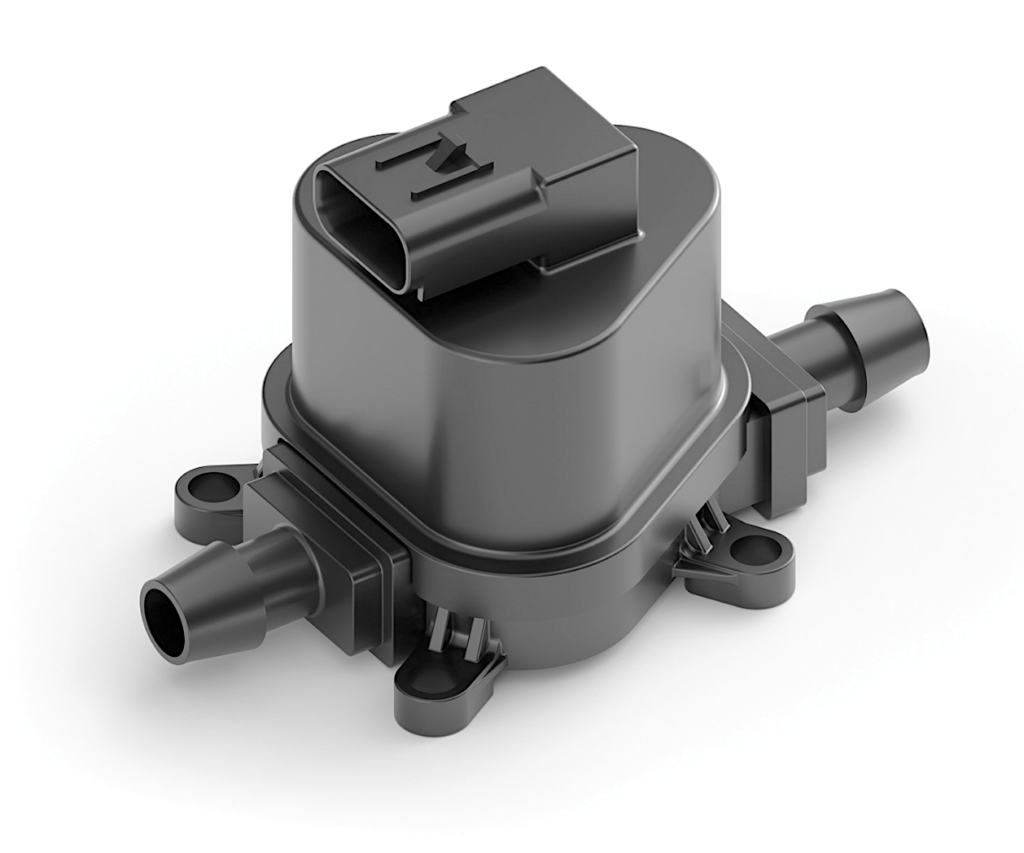
TLX Technologies highlighted its new modular coolant valve (MCV) to illustrate a range of flow control options for emerging dynamic thermal management strategies.
“Automakers know that with fast charging they’re going to need to flow the right amount of cooling fluid at the right temperature in the right volume to the right spot at the right time,” said Dennis Jensen. “So you’ve got to have the ECU, the BMS – the whole vehicle – understand what’s hot, what’s cold and what needs support from thermal management, and they’re going to need the control and the valving to get the fluid there.”
Many EV start-ups want something road-ready, but can’t afford custom designs and need something better than the plentiful cheap off-the-shelf valves that are not made for vehicle use. To help define the MCV, TLX looked at the range of features EV developers want, and included options for various port sizes, support for 12 and 24 V DC power, PWM control and LIN bus comms, both with feedback, the idea being to provide flexibility to make changes during development without incurring prohibitive time and cost penalties.
The MCV also includes an actuation package with high-torque gearing that allows the use of an innovative sealing package with low leakage and low pressure drop at all ports, Jensen said.
The MCV is part of a new family of thermal management valves, some of which will support volumetric flow control in, for example, battery packs divided into modules or zones for thermal management purposes where sensor data may show one zone in need of maximum coolant flow when others don’t. Here, valving with stepped flow control can be as effective as a more complicated three-way valve, Jensen added.
This family of valves includes discrete proportional valve (DPV) and discrete piloted proportional valve (DPPV) types. The former use latching solenoids that open and close two different sized orifices to produce zero, low, medium and high flows, each in response to a pulse of power.
DPPV types are for systems that need higher coolant flows, relying on the pilot valve to open a combination of low and high flow-rate valves to permit appropriate flow when needed. This kind of solution, Jensen said, is more robust to shock and vibration than something required to hold position while providing degree-by-degree control. In the event of a failure, these valves can be configured with a fail-safe feature that uses a capacitor and control circuitry to drive them to a customer-defined safe position.
Forge Nano presented its Atomic Armor coatings (aka Atomic Layer Deposition, or ALD) for anode and cathode active materials that are applied to improve surface stability and increase the lifetime and safety of batteries.
With angstrom-level thickness (0.1 nm) control of the coatings, the process is used to apply materials such as metal oxides to treat the active materials before they are mixed into slurries and applied to foil substrates to form the lithium-ion battery electrodes, Dr Jonathan Travis said.
The non-line-of-sight thermal process is applied at industrial scale, and Forge Nano is now treating various material types from different manufacturers. “We’re happy to work with any producer of cathode/anode material and let the data do the talking,” Dr Travis said. “We typically see improvements between 20% and 80% or more, depending on the material.
“We’ll take somebody else’s active material, like an NMC811, and put a sub-nanometre thick coating of something like aluminium oxide onto it, which protects the surface from degradation by the electrolyte.
“Typically you can get decomposition mechanisms such as transition metal ion dissolution leaching into the electrolyte, which can cause all sorts of detrimental issues within the battery, but we’re stabilising that surface electrochemically and allowing for high performance but without the degradation.”
Controlling the thickness of the ALD layer is critical to providing the desired protective effects without interfering with key properties of the active material. The ALD process takes place in a reaction chamber that agitates the powders inside it to ensure that the particles don’t stick together.
“This allows the gas phase precursors to access the full surface area of the material,” Dr Travis said. The precursor then reacts with the surface of the active materials.
“But because it’s self-limiting, it will only react with one atomic layer at a time. Then we will change out whichever precursor we’re dosing into the reaction bed based on which stage of the cycle we’re in. We control the number of cycles and the thickness.”
Forge Nano is becoming a cell producer in the US using its Atomic Armortechnology and in-house developed formulations to enable the US to compete in lithium-ion battery manufacturing, Dr Travis said.
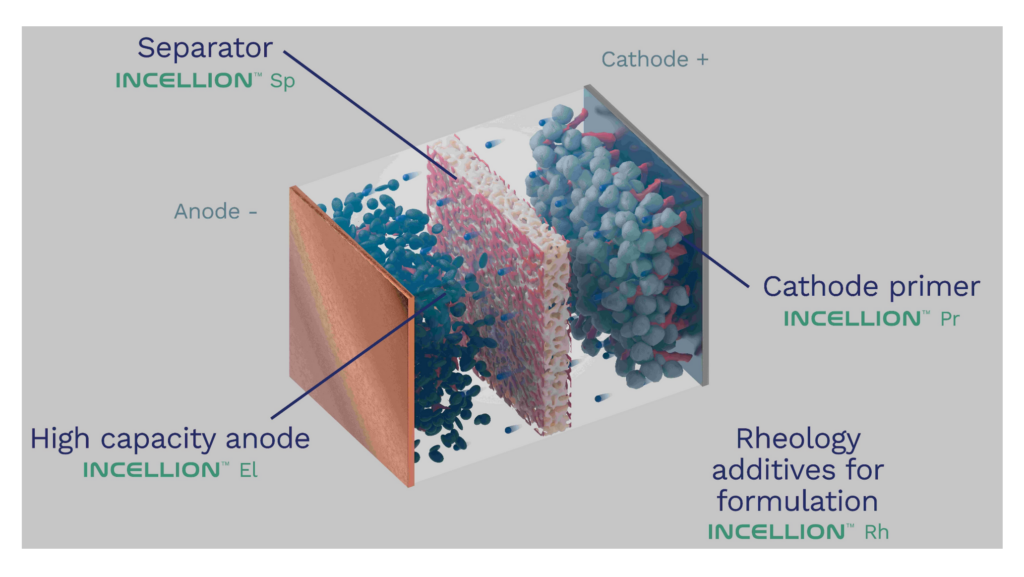
Arkema discussed its Kynar polyvinylidene fluoride (PVDF) binder for lithium-ion battery cells, which is formulated to resist high voltages and aggressive cell chemistries such as NMC, along with a new acrylic binder that is flexible enough to accommodate the swelling of silicon-rich anodes in LFP cells. Both binders are waterborne.
In a cell, the binder sticks the active material particles to each other at the anode and cathode sides, to their foil substrates and to the separator between the anode and the cathode. The binder does more than this, however. “It wets faster, so you accelerate your manufacturing process, and you have less contact resistance, so you have better performance and better longevity,” Mickael Havel explained.
“Kynar PVDF also has a chemical affinity with fluorine-based electrolytes such as LiPF6 and LiFSI. Arkema’s Foranext LiFSI accelerates the flow of ions through the electrolyte and across the separator during charging and discharging, which is especially needed for fast charging,” Havel said.
The Kynar PVDF binder is also compatible with the ceramic coatings that some cell manufacturers use to enhance the dimensional stability of the separator, thereby reducing the risk of short-circuits between the anode and the cathode.
“Our PVDF could be inside that layer of ceramic, a constituent of it, or it could be put on as a top-coat,” Havel said. “In that case, it is called a sticky separator because when you put the anode, the separator and the cathode together at high speed you want good adhesion between them so that you don’t get any sliding that could cause a short.”
For lower voltage cell chemistries such as LFP, Arkema has launched range of acrylic-based binders, dispersants and rheology additives it calls Incellion. The acrylic binder, for example, allows greater use of silicon in the cell anode.
Silicon accommodates more lithium ions, enabling the anode to hold a bigger charge, but swells in the process so that the cell ‘breathes’ through the charge-discharge process. “You need a binder that can accommodate that breathing – expanding, contracting – without cracking,” Havel said.
Wildcat Discovery Technologies showcased its high-throughput r&d platform, which is modelled on drug discovery techniques used by the pharmaceuticals industry and is designed to accelerate battery innovation through projects with automotive OEMs and cell manufacturers to test new chemistries. The company is also using the platform to develop its own active materials.
“We’re able to do many experiments in parallel and get results quite fast,” Jim Voeffray explained. “Over the last 15 years, the company has automated the testing of multiple slight variations on different chemical recipes at the same time, typically incorporated into small pouch cells and mounted in test towers.
“Now we have updated our strategy to where we’re going to enter the market as a battery materials supplier focused on cathode materials.”
The first materials the company will offer will be LFP formulations, followed by lithium manganese iron phosphate. The latter promises better performance in terms of energy density and power density, with comparable cycle life and costs to LFP cathode chemistries.
The plan is then to follow these with a proprietary cathode material based on disordered rock salt, a high-energy material without the nickel or cobalt capable of competing with high-nickel NMCs, and capable of serving as a drop-in replacement for an NMC cathode in any cell.
“We’ve been working on disordered rock salt for the past 7 years and now we can see a path to commercialisation,” Voeffray said. “We’re probably a year away from having something customers can sample.
“Essentially it’s a high-energy density material with a good safety profile – better than NMC – and all the materials in it are low-cost and abundant,” he added. “The challenge at this point is cycle life, but we’re hoping to improve that up to 1000 cycles so we can use it in automotive applications.”
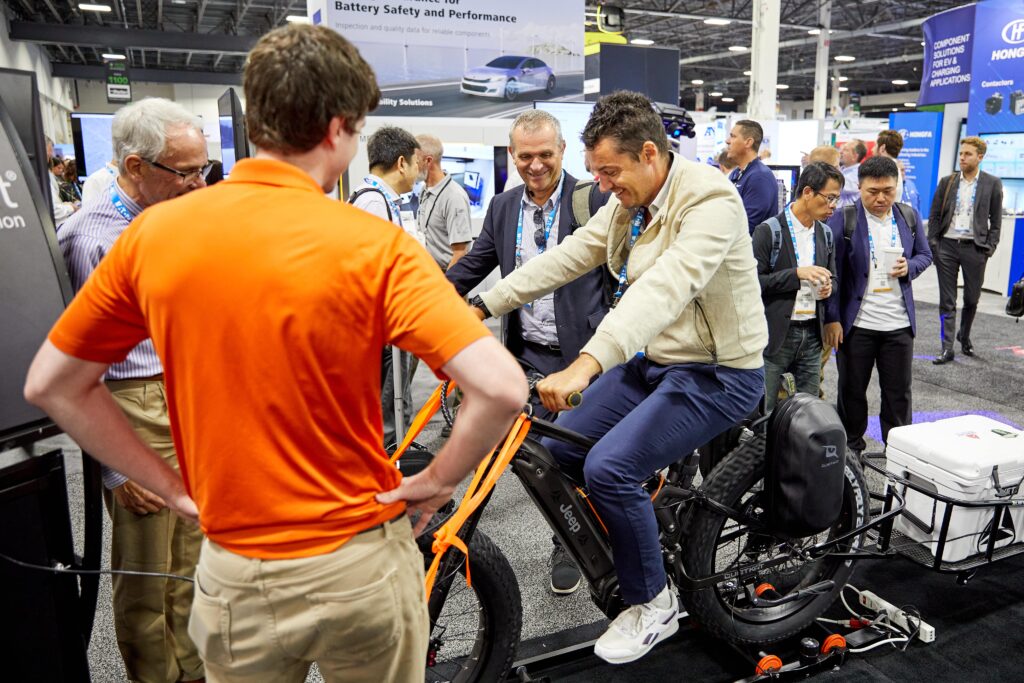
(Image authors own from The Battery Show North America)
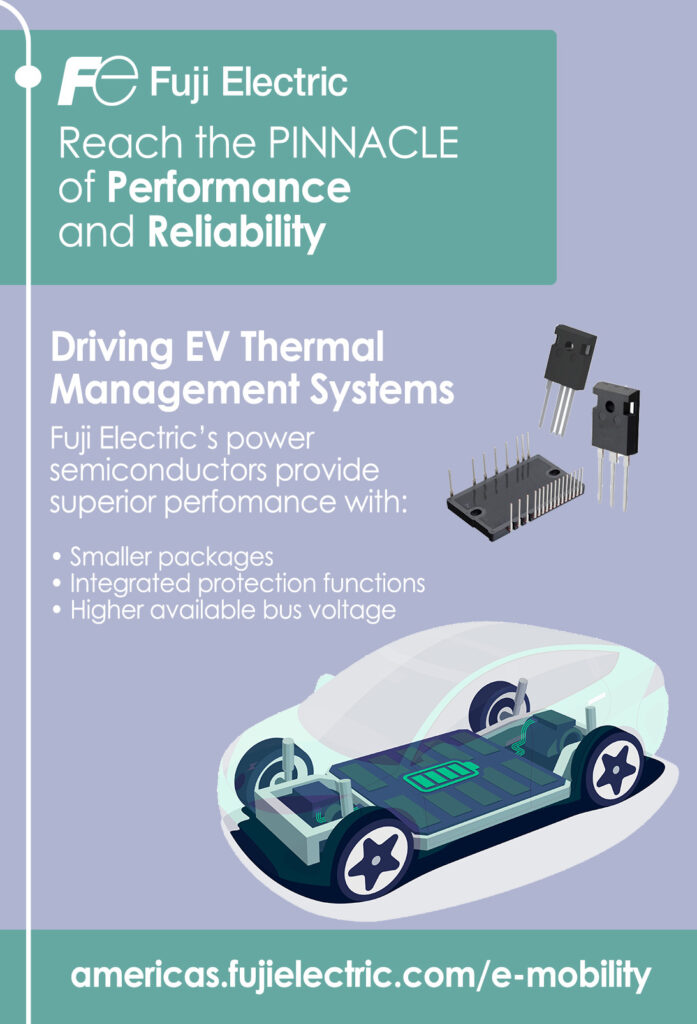
Dewesoft demonstrated its Obsidian data logging and DewesoftX processing and visualisation software at the show, running it live hooked up to a QuietKat e-bike and showing the outputs on a dashboard-style display for visitors to interact with.
The company makes data acquisition hardware to fit the space available. Mike Davis said, “It could be rugged or non-rugged, for very specific uses like measuring power instances, strain or stress. It just depends on what you need to measure. We feed the output into a software suite, where you can visualise the engineering units and make decisions based on what they show.”
With the e-bike being tested live on the stand, engineers were invited to walk up and push buttons in an interactive environment they could relate to their own work and try features they might find useful.
The e-bike was connected to a six-channel strain gauge unit that functions as a universal input able to handle any sensor that puts out a voltage signal. The sensors attached to the bike included an accelerometer to measure shock and vibration, a load cell under the seat to measure weight, thermocouples attached to the motor and final drive, and a tachometer putting out a square-wave signal to measure rpm at the wheel and vehicle ‘speed’ on the dyno.
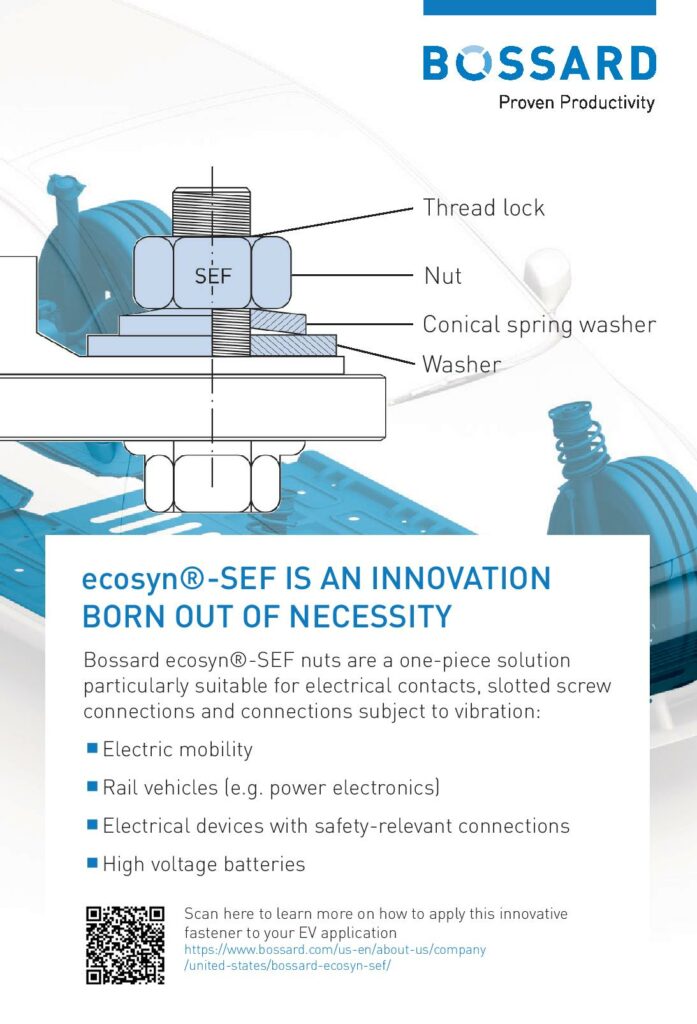
Dewesoft describes its Obsidian systems as high-end data loggers and embedded data acquisition systems with low-power ARM processors running Linux-based open architecture operating systems. An Obsidian system is designed to act as a standalone data logger, real-time control system and a signal conditioning front end simultaneously.
The company can provide signal amplifier cards for data sources including voltage and current sensors, integrated electronics piezo-electric devices, thermocouples, resistance temperature detector devices and strain gauges. All Obsidian systems come with the DewesoftX processing and visualisation software, updates for which are free of charge.
Hongfa America presented its range of contactors for EV battery packs, the main use for which is making and breaking the connection between the battery and the inverter. These components have been shaped by the growing need to handle much higher voltages and currents, according to Dan Smith.
Claiming more than 60% market share in China and 40% globally, Hongfa is also the largest manufacturer of relays in the world. Relays, Smith explained, do essentially the same job as contactors, both being electromagnetically operated switches. The distinction between them is roughly drawn by current capacity, with anything less than about 30 A considered a relay and anything above that a contactor.
The engineering challenges involved in handling higher voltages and currents centre on cooling the contactors and on arc quenching to protect the main contacts, he said. The main heat source is the I2R relationship between current and resistance across the contacts, with others including the coil that moves the contactors. Cooling techniques centre on sizing busbars for high thermal as well as electrical conductivity, and active cooling measures such as liquid heat exchange.
“With the high-voltage systems, there’s a tremendous amount of arc energy available, and if you don’t have a way to push that arc out of the contact area it’ll weld the contacts together,” Smith said. “So we use rare earth permanent magnets to push the arc out of that area and into another part of the contactor assembly.”
When the current flows through the magnetic field, the electrons are subject to Lorentz electromagnetic forces that aid in arc suppression, allowing the contacts to close safely.
Click here to read the latest issue of E-Mobility Engineering.
ONLINE PARTNERS






















